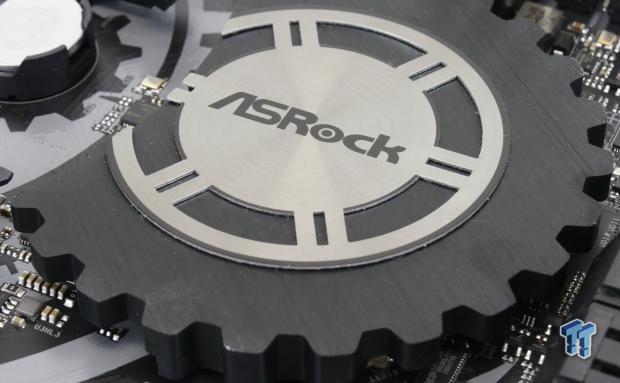
The Bottom Line
Introduction, Specifications, and Pricing
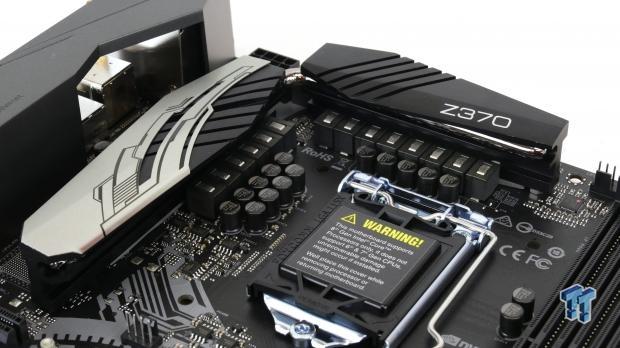
ASRock's coming out with many products for Intel's at least Z370 series of chipsets, and one of these is the Z370 Taichi. The Taichi line of motherboards has always provided an attractive feature set with at an even more attractive price point.
The Taichi motherboards typically have excellent feature controllers (such as Intel NICs), solid layout, and a unique color theme aimed at being different. ASRock is sticking with the same "gears" aesthetic as they have in the past but with a slightly different color one on the highlights.
Let's take a look at what the Z370 Taichi has to offer.
Specifications

The Z370 Taichi offers three M.2 slots, USB 3.1 on the rear and an internal header, dual Gbit NICs, SLI, CrossFireX, SATA6Gb/s, USB 3.0, and even wireless AC.
Pricing
The Z370 Taichi costs $219.99.
Packaging and Z370 Taichi Overview
Packaging and Overview
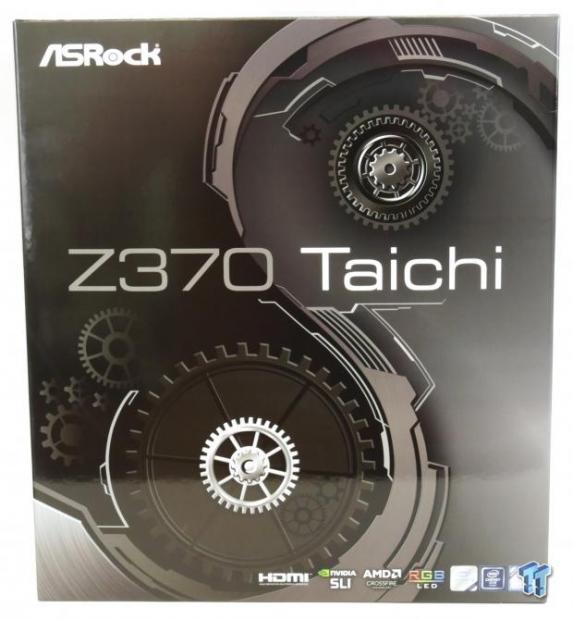

The box for the Z370 Taichi uses the same box art as previous generation Taichi motherboards. The motherboard itself sits in a foam encasement and inside an anti-static bag. Accessories are also present in the box but in a different section than the motherboard.

The accessory package includes four SATA6Gb/s cables, IO shield, SLI HB bridge, M.2 screws, WIFI antenna, ASRock case badge, manual, driver DVD, and postcard.


The Z370 Taichi has a modest five fan headers. All fan headers offer hybrid control so they can operate as PWM or DC mode fan headers. The two headers circled in red double as water pump headers and can offer up to 1.5A of current. The rest of the headers seem to be rated 1A. All the headers circled in blue or red and auto sense if a PWM or DC mode fan is in use, while the CPU fan header circled in orange cannot and operates in PWM mode by default. The giant gear at the center of the motherboard looks pretty cool and works with the PCH heat sink to create a near effect. The rear of the motherboard has many of the ICs on the motherboard because the motherboard is designed to be aesthetically pleasing on the topside.

The rear IO panel features PS/2 Keyboard/Mouse, four USB 3.0 ports, USB 3.1 type-A, USB 3.1 type-C, two Gbit LAN ports, Clear CMOS button, WIFI antenna, HDMI, DisplayPort, and 7.1 gold-plated audio outputs with S/PDIF out.

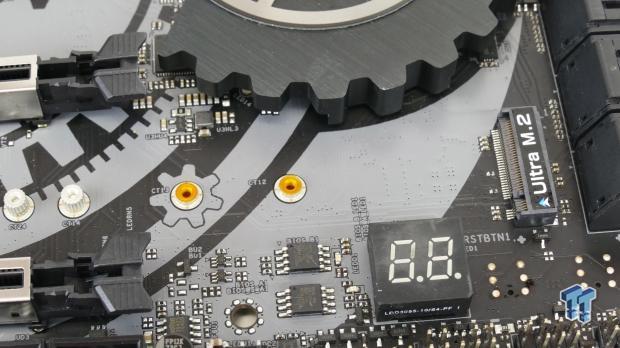
The PCI-E layout is simple; the three reinforced x16 slots operate at x16/x0/x0, x8/x8/x0, or x8/x4/x4. There are also two PCI-E 3.0 x1 slots on the motherboard, and they are open-ended so they can take larger cards. The motherboard features three 32Gb/s M.2 slots that are connected to the CPU.

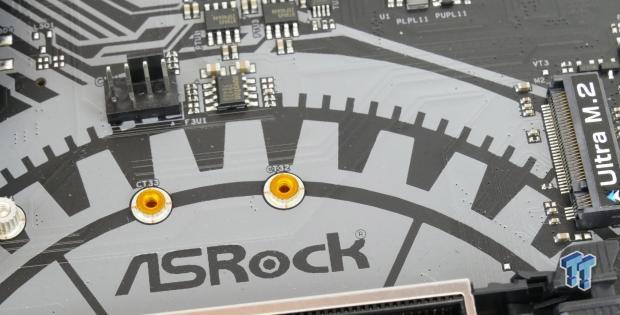
We find a total of three 32Gb/s "Ultra M.2" slots on the motherboard all connected to the PCH through x4 PCI-E 3.0 connections. However, each one of these slots shares bandwidth with one SATA6Gb/s port. If M2_1 one is in use, SATA ports 0 and 1 are disabled, if M2_2 is used then SATA 4 and 5 are disabled, and if M2_3 is used with a SATA device, then SATA port 3 will be disabled.

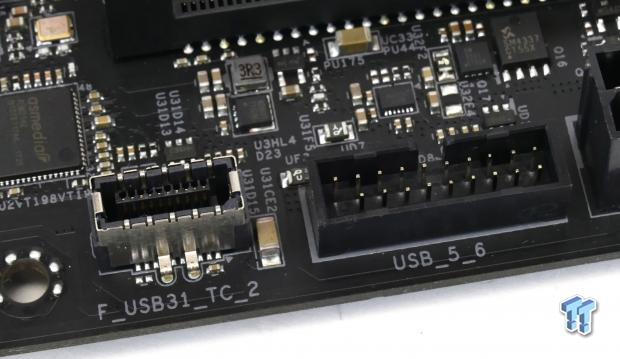
ASRock's motherboard features six SATA6Gb/s ports that are routed from the PCH and adds two from an ASMedia controller. One of the USB 3.0 internal headers is angled at 90degrees, and we find another USB 3.0 internal header located below the 24-pin connector. There is also a USB 3.1 internal header located below the USB 3.0 internal header.
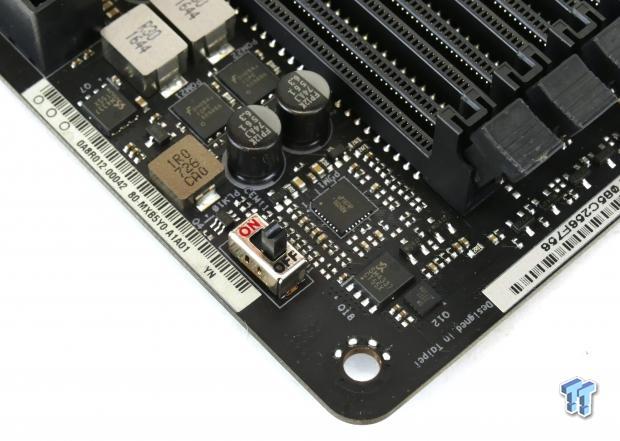

The motherboard also features an XMP mode switch. A POST code display is located in the lower right corner of the motherboard right above an RGB LED header. There is also a header located in the lower right corner that will active the backup BIOS ROM.
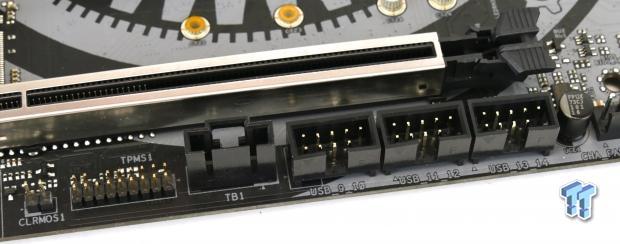
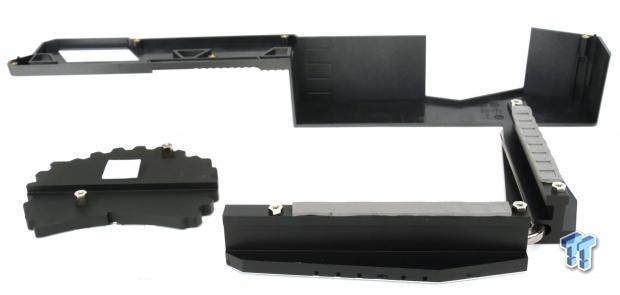
The motherboard offers three USB 2.0 internal headers, a ThunderBolt GPIO header, a clear CMOS header, and a TPM module header. The heat sinks are also attached to the motherboard very well.
ASRock Z370 Taichi Circuit Analysis
Circuit Analysis
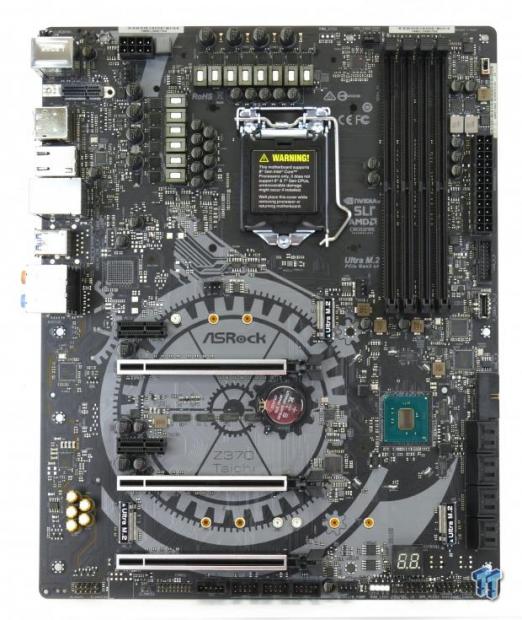
The Z370 Taichi shows us the goods when the heat sink comes off.

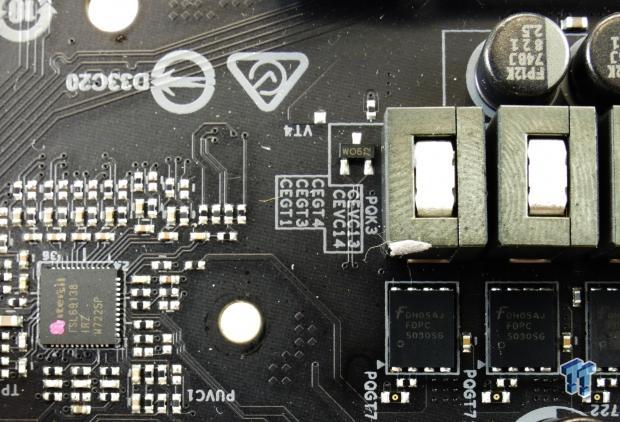
The phases on the Z370 Taichi are in a 10+2 phase configuration for the CPU core and the iGPU phases. The Intersil ISL69138 is used as the PWM controller and supports up to 7 phases on two rails (5+2 here). The main CPU rail gets five PWM channels, and the iGPU rail gets two PWM channels. Each phase gets a 60A inductor and uses Fairchild Semiconductor FDPC5030 PowerTrech Power Clip dual N-channel MOSFETs which are rated for a continuous 25A output, just like NexFETs that are popular. Two APW8720 PWM controllers with integrated drivers are used for the VCCSA and VCCIO single phase VRMs that use the same dual-N channel PowerTrench MOSFETs as the main CPU VRM.
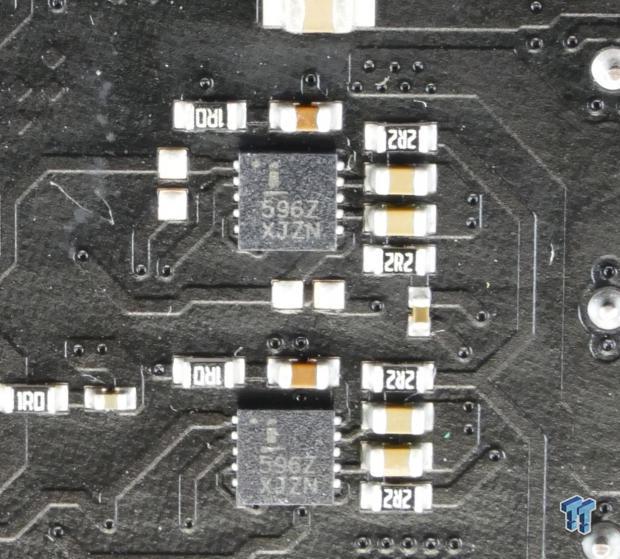
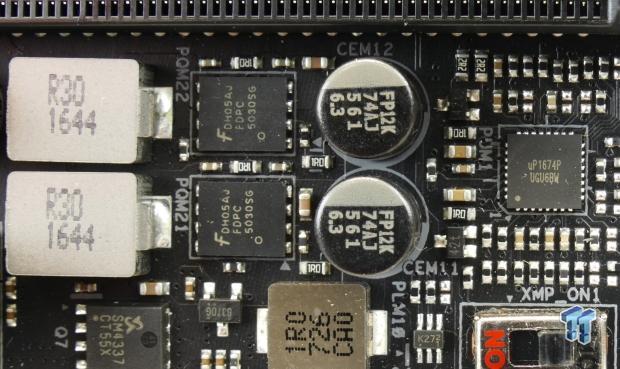
Each PWM channel seems to output to two ISL6596 N-channel MOSFET drivers for the VCore, which is an odd way of doubling phase count from 5 to 10 for the core phases. The method used here allows for each phase to have its own driver, it's like a better method of doubling up phases compared to two power stages on one driver. The memory VRM uses a UPI uP1674P PWM controller with integrated drivers and outputs to the same Fairchild PowerTrench Power Clip dual N-Channel MOSFETs as used in the CPU VRM.
ASRock Z370 Taichi Circuit Analysis Continued
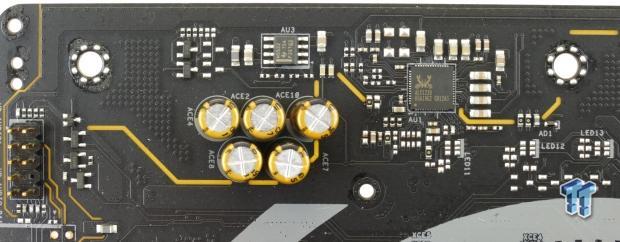
ASRock uses the Realtek ALC1220, as it has a single headphone amplifier on the 120dB output, ASRock added a second amplifier, the NE5532, for the internal HD audio header's output. The PCB is also physically isolated from the audio section, and Gold series Nichicon Audio capacitors are used to improve audio quality.

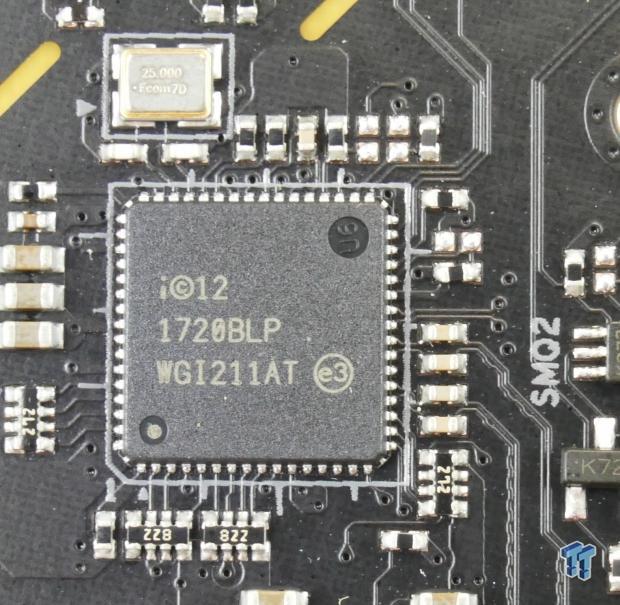
The Intel i219 PHY and i211AT NIC are used to provide two Intel Gbit LAN outputs.

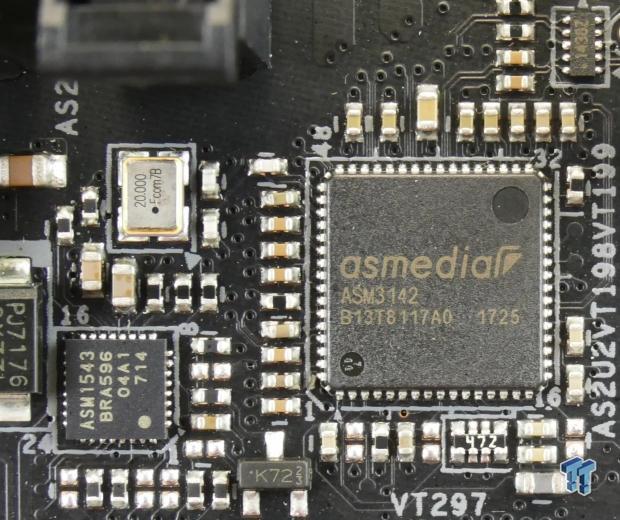
The Intel Wireless AC 3168NGW is used to provide 433Mbps 1x1 wireless AC. The internal USB 3.1 header uses the ASMedia ASM3142 controller and the ASM1543 type-C switch.
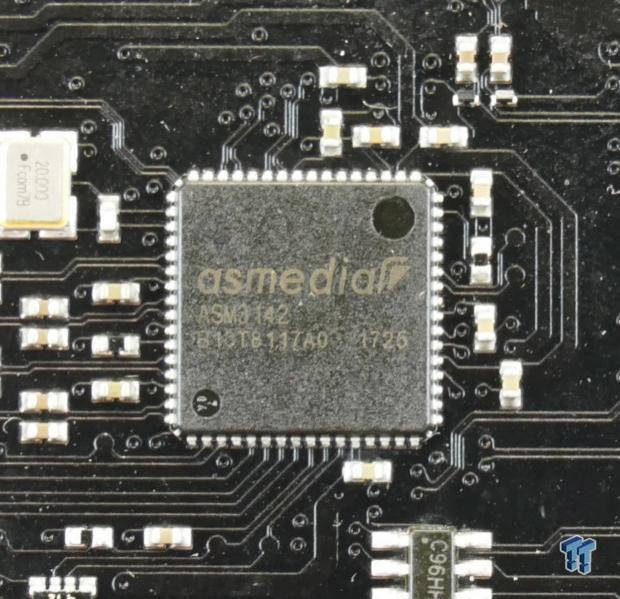

The ASMedia ASM3142 is used for the rear USB 3.1 ports and is located on the rear of the PCB, and its ASM1543 type-C switch and CC logic chip is located on the top of the PCB.
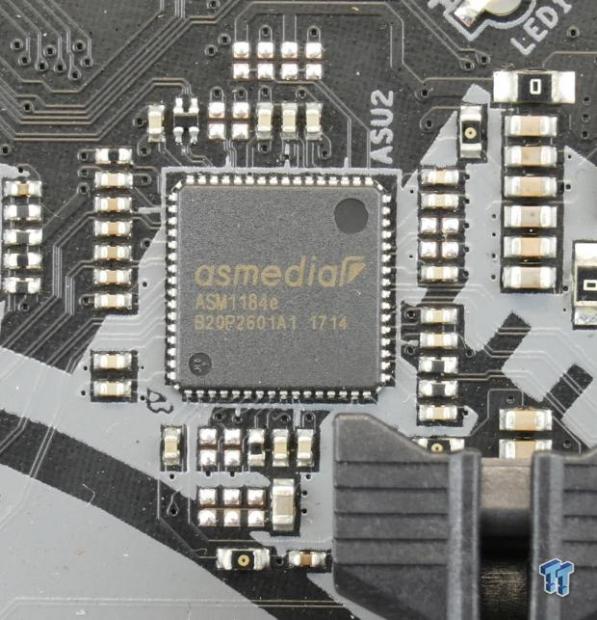
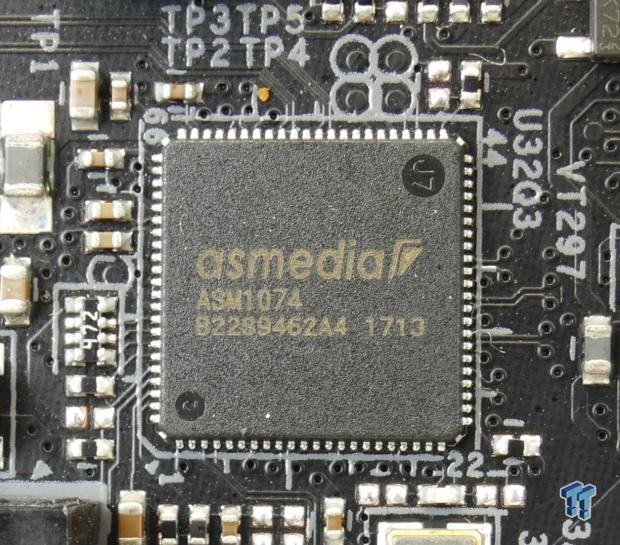
An ASMedia ASM1184e is a PCI-E hub that takes one PCI-E 3.0 port and outputs multiple PCI-E 2.0 ports for devices such as the Wireless AC controller and the ASMedia SATA controller. The ASMedia ASM1074 USB 3.0 hub, takes one USB 3.0 port and outputs four for the internal USB 3.0 headers.
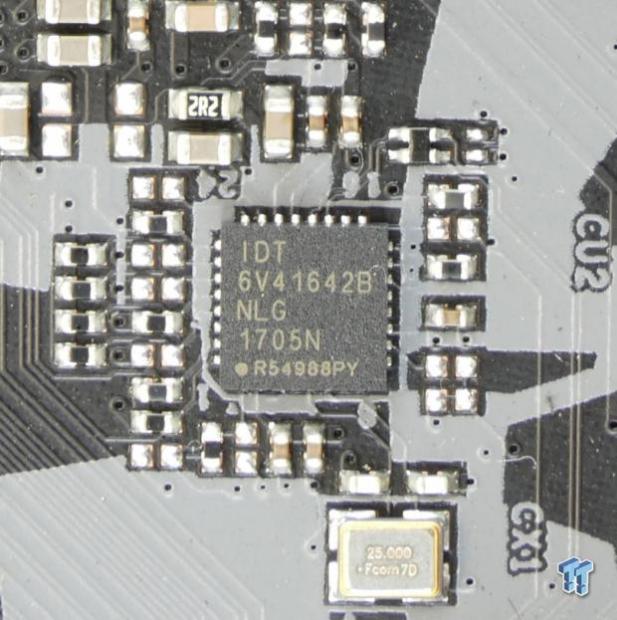

The IDT 6V41642B clock generator is used to enhance BCLK overclocking. The ASMedia ASM1061 provides two extra SATA6Gb/s ports.
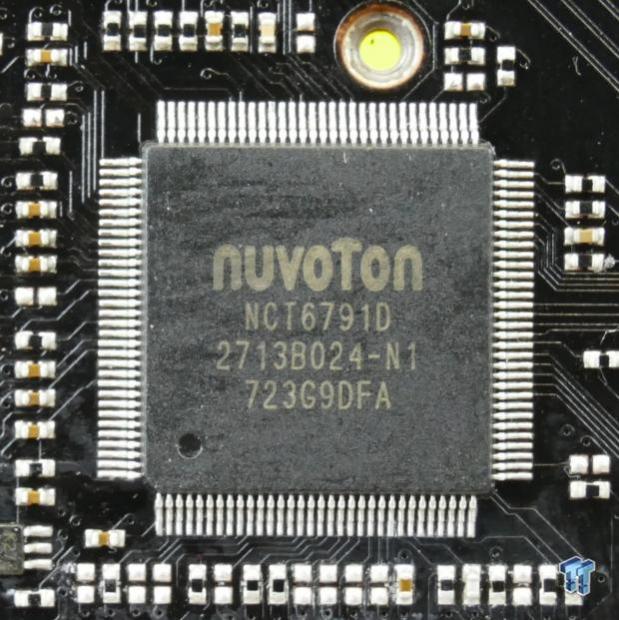

The nuvoTon NCT6791D SuperIO provides the PS/2 port as well as voltage and temperature monitoring. The nuvoTon N76E885AT20 provides the RGB LED capabilities, including control over the RGB LED headers. We also find multiple ASMedia ASM1480 PCI-E 3.0 quick switches around the motherboard.
BIOS and Software
BIOS
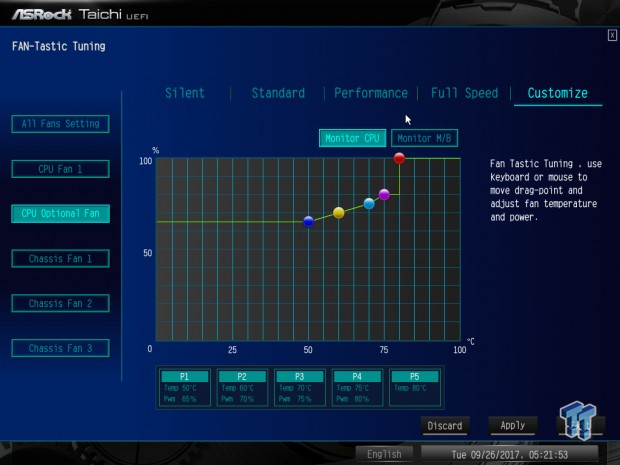
ASRock's Z370 UEFI is loaded with features and even overclocking profiles for the CPU. The built-in overclocking profiles go all the way up to 5GHz, but they apply over 1.4v, which is way too much voltage to cool down. The BIOS does have LLC, but when we tested it, it wasn't that strong.
Overall, the motherboard offers every setting you need to tune your system, including RGB LED settings. Fan control is present through a GUI and through a menu where you can manually type in settings. The UEFI also offers beginner mode, which is the default mode, and an advanced mode you see pictured.

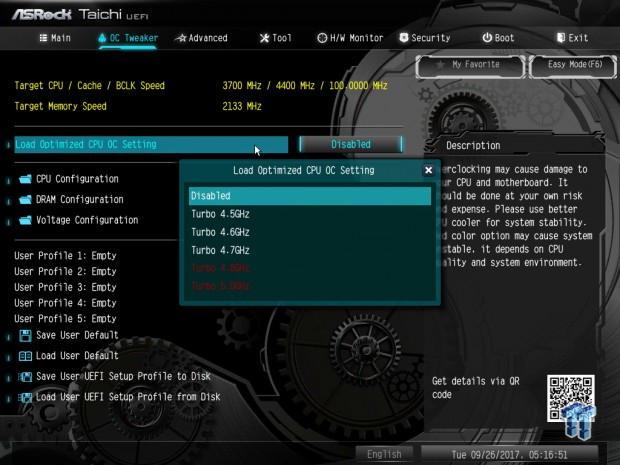
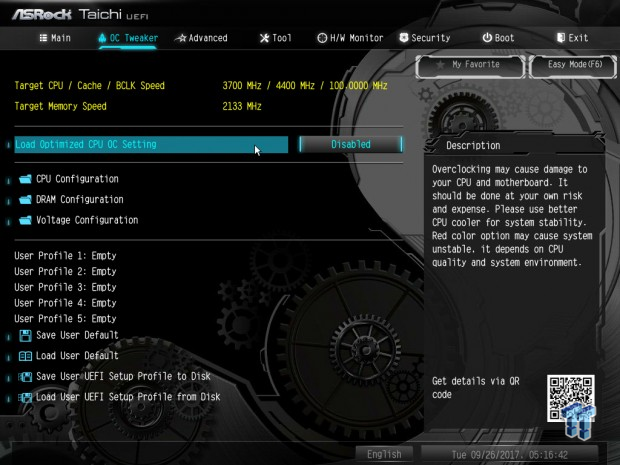




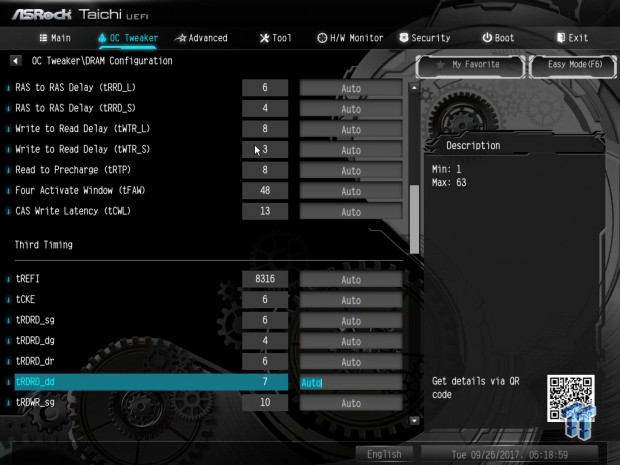
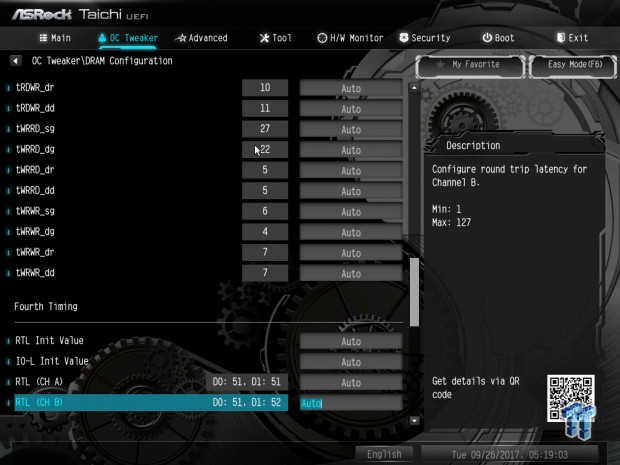



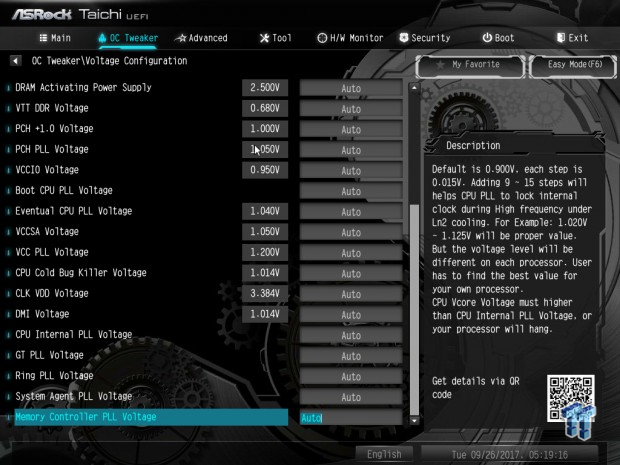
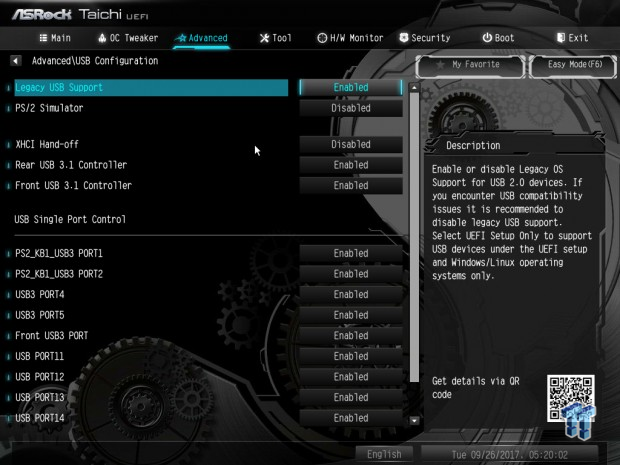
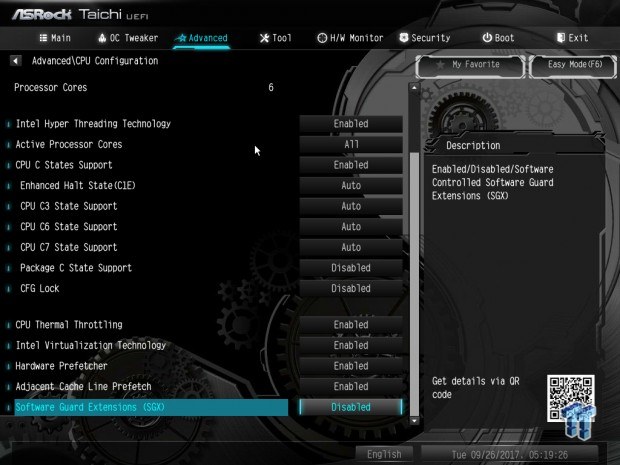
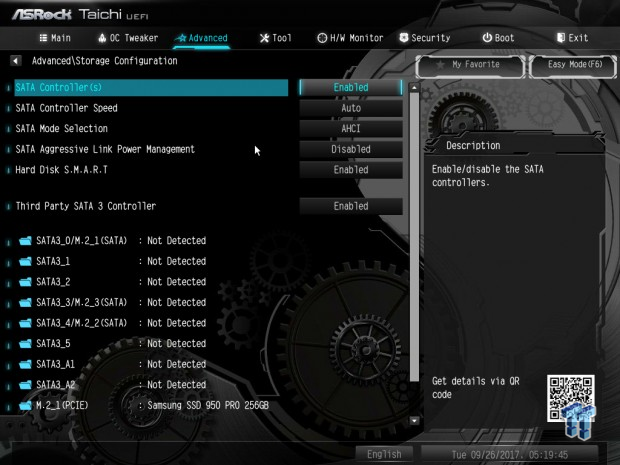

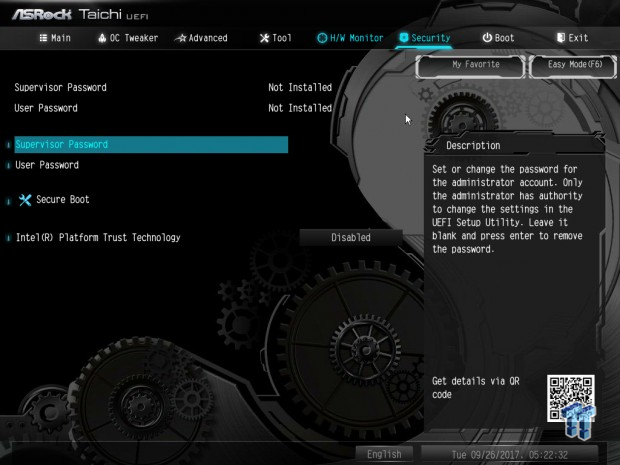
Software
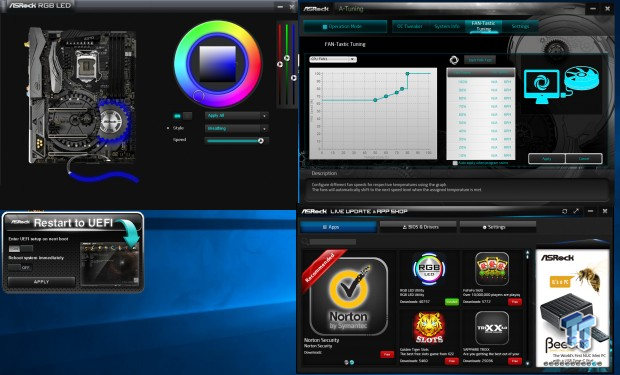
ASRock includes APP Shop, A-Tuning, Restart to UEFI, XFast LAN, and RGB LED as included software applications.
Test System Setup
Steven's Motherboard Test System Specifications
- Motherboard: ASRock Z370 Taichi
- CPU: Intel Core i7 8700K
- Cooler: Corsair H115i GT - Buy from Amazon
- Memory: Corsair Dominator Platinum (2x8GB) 3200MHz
- Video Card: NVIDIA GeForce GTX 980 - Buy from Amazon / Read our review
- Storage - Boot Drive: Samsung 950 Pro 256GB - Buy from Amazon / Read our review
- Storage - SATA6G Drive: Corsair Force LS 240GB - Buy from Amazon / Read our review
- Storage - M.2 Drive: Intel 750 400GB U.2
- Storage - USB Drive: Corsair Voyager GS 64GB - Buy from Amazon / Read our review
- Case: Corsair Obsidian 900D - Buy from Amazon / Read our review
- Power Supply: Corsair RM1000 - Buy from Amazon / Read our review
- OS: Microsoft Windows 10 - Buy from Amazon
- Monitor: GIGABYTE PA328 ProArt 32" 4K - Buy from Amazon
- Keyboard: Corsair K70 LUX - Buy from Amazon
- Mouse: Corsair M65 PRO RGB - Buy from Amazon / Read our review
- Headset: Corsair VOID RGB Wireless - Buy from Amazon / Read our review
- BIOS: P1.13A
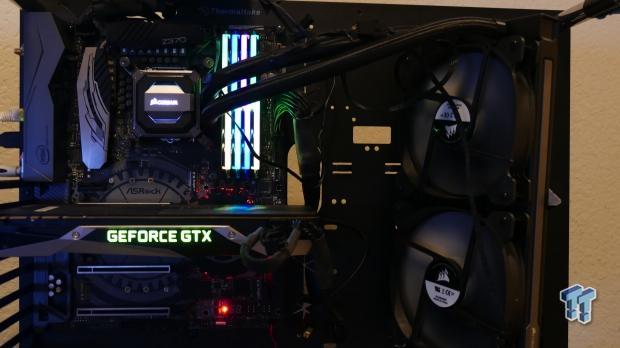

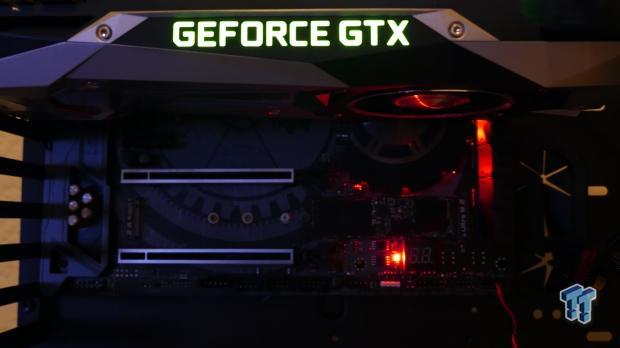
The Z370 Taichi has some unique aesthetics. Just like its predecessors, the motherboard features a symbolic gear theme with a mixture of black white and those colors that fall in between. The motherboard also integrates only a few RGB LEDs, so those people who dislike paying for RGB lighting will find that attractive. The motherboard does have some RGBs under the PCH heat sink, and they add some style to the system.
Overclocking
Overclocking Results
CPU Overclocking
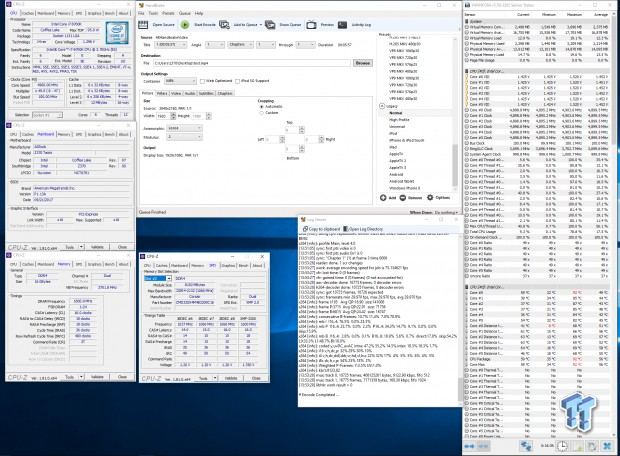
The Z370 Taichi was capable of overclocking my 8700K to 4.9GHz. With BIOS P1.17 BETA, LLC levels work well on this motherboard, if you have an earlier BIOS (I had P1.13) version you should update if you plan on overclocking. I was able to stabilize voltage around 1.29v. Memory overclocking was very simple and just requires enabling XMP, you won't have to manually set voltages or anything, and I believe the motherboard has a switch to physically enable XMP without enter the UEFI.
Compatible Memory Overclocking Kits
In this section, I overclock four memory kits only using XMP, if the kit works then the results are below. I welcome memory vendors to send in their kits to be tested on each motherboard.
Corsair Dominator Platinum 3200MHz C16 8GBx2
The board easily overclocked the Dominator Platinums to 3200MHz as you can see in the image at the top of the page.
G.Skill TridentZ RGB 3600MHz 32GB (4x8GB)
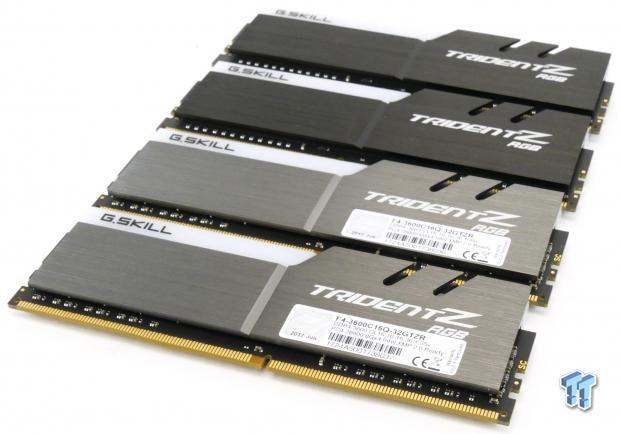
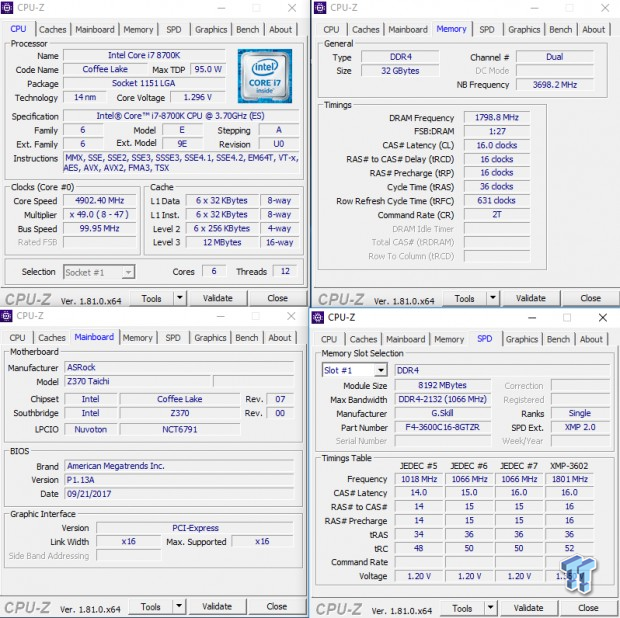
The motherboard also overclocked the 4x8GB 3600MHz TridentZ RGB kit with ease.
CPU, Memory, and System Benchmarks
CINEBENCH 11.5
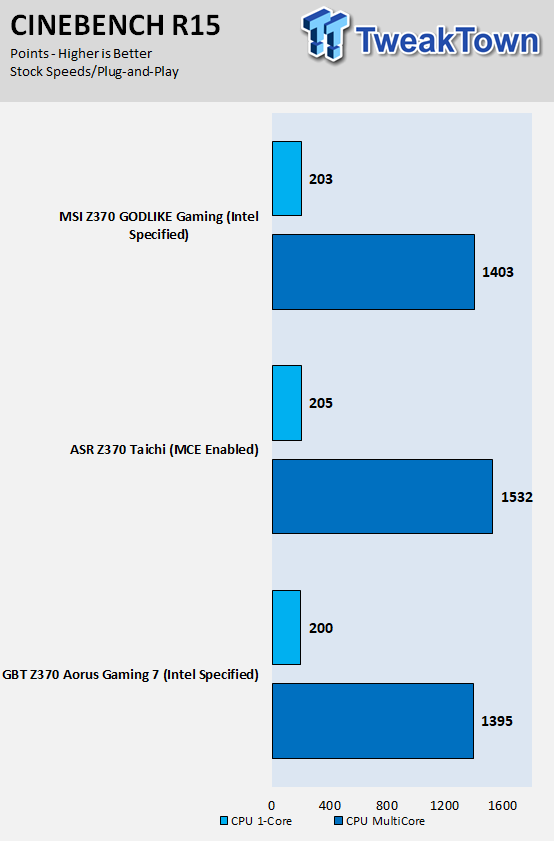
wPrime
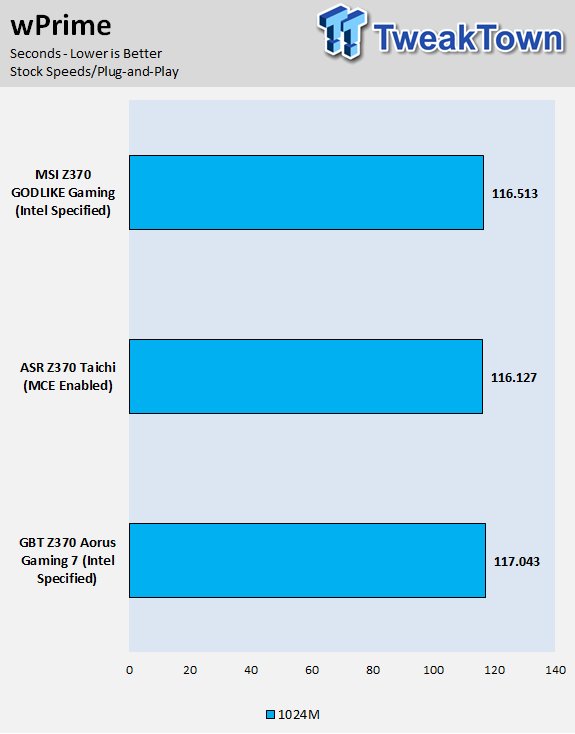
AIDA64 FLOPS and IOPS
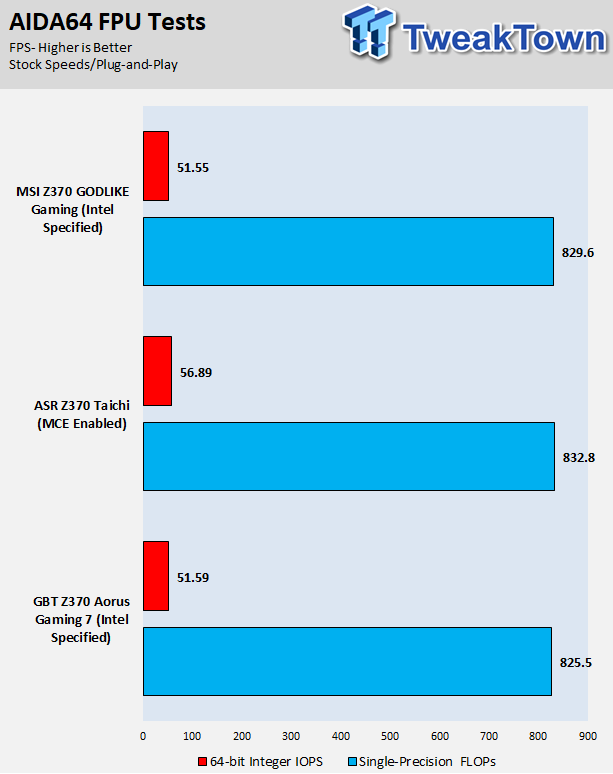
AIDA64 Memory
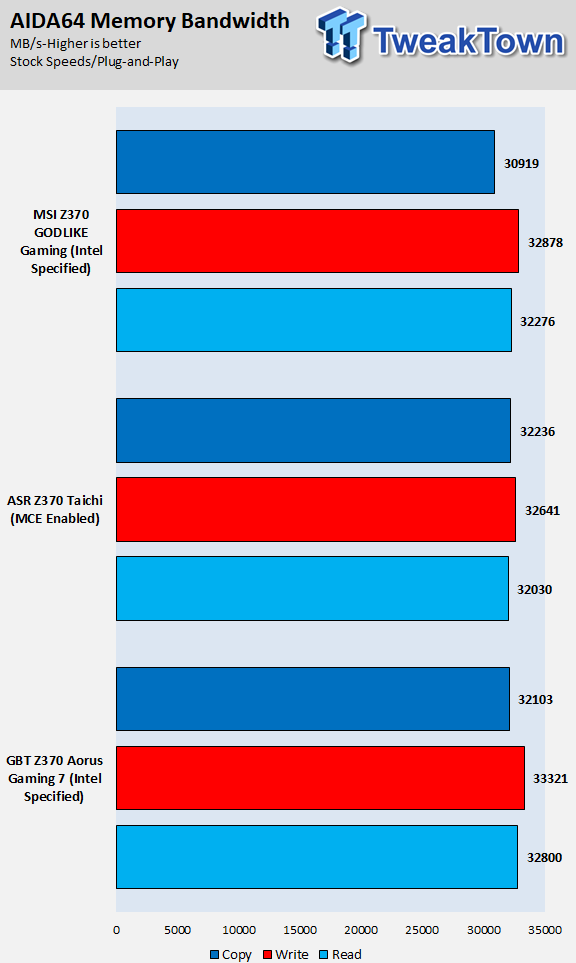
ScienceMark

HandBrake
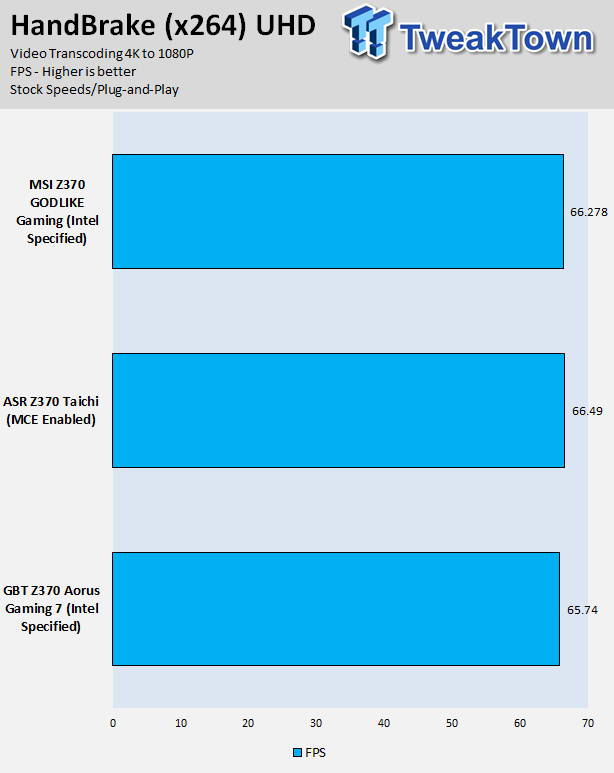
3DMark: Fire Strike
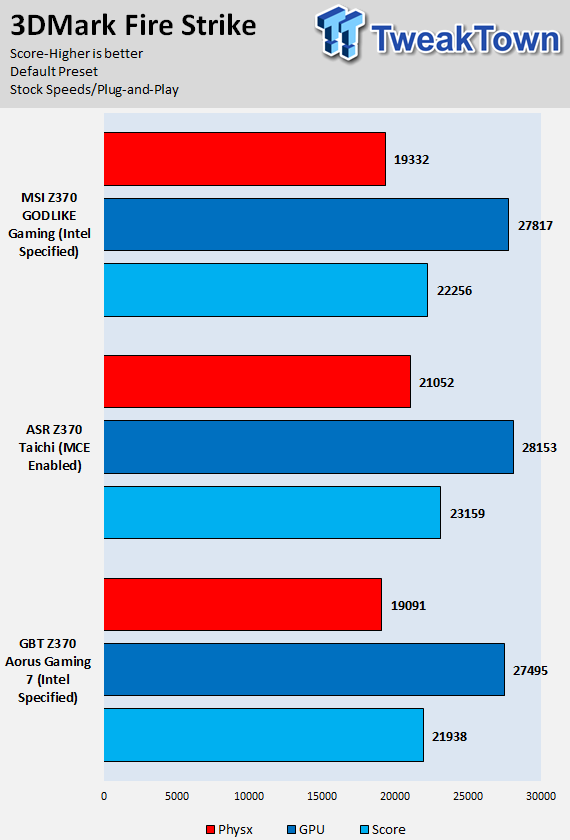
3DMark: Cloud Gate
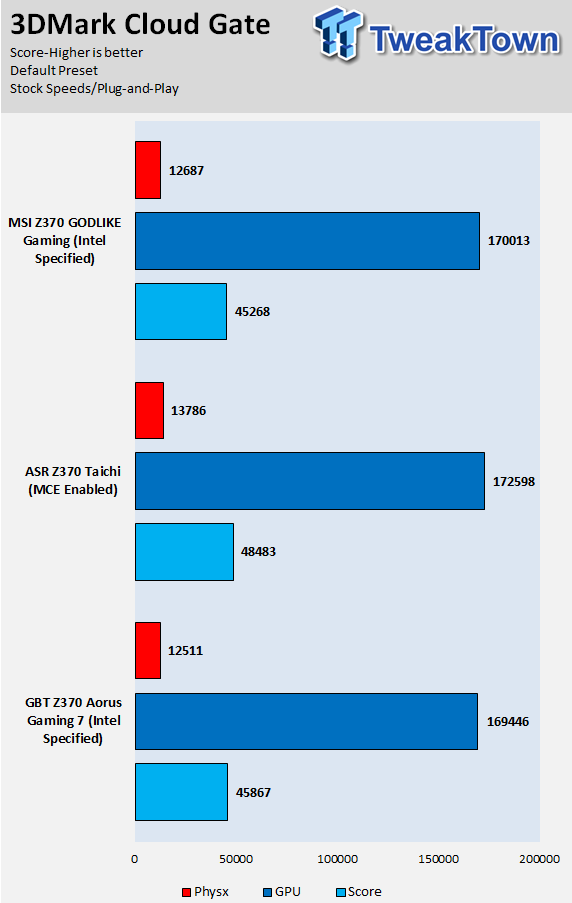
ResidentEvil 6
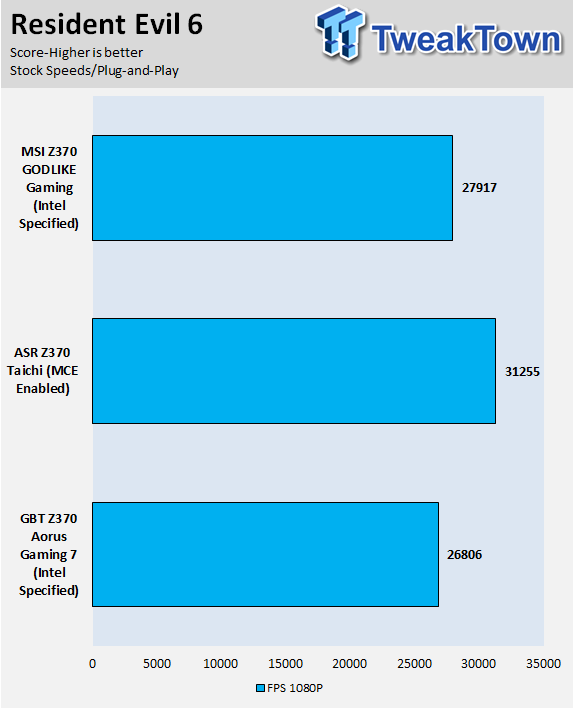
These tests are done out of the box, so I have decided to include whether or not the vendor has implemented some type of default overclocking, such as multi-core enhancement. Multi-core enhancement is when the motherboard vendor pushes all cores to maximum turbo speeds instead of just one or two.
MCE as I will call it, can cause instability if your CPU isn't great, and we would hope vendors would have it off by default, but it does offer a free performance boost out of the box. Some motherboards also might increase the BCLK a bit over stock to score higher, and some might even mess with the turbo boost table.
If we standardize settings, then most motherboards should perform the same, but in this case, we haven't. Overall, the Z370 Taichi tops our charts all over because it overclocks all cores to 4.7GHz at stock instead of following Intel's stock rules. The fact that MCE is on at default could be because this is a beta BIOS, and you could expect this to change with official BIOS releases.
System IO Benchmarks
CrystalDiskMark SATA6G:
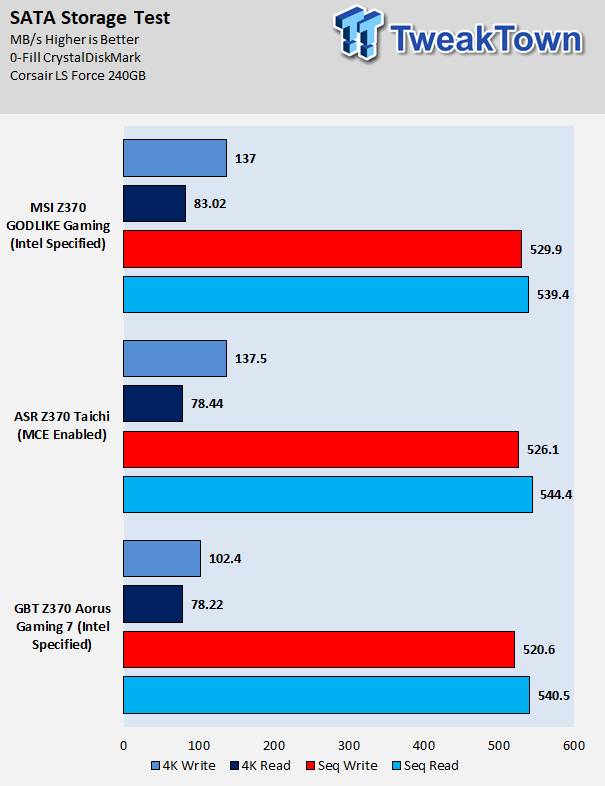
CrystalDiskMark M.2:
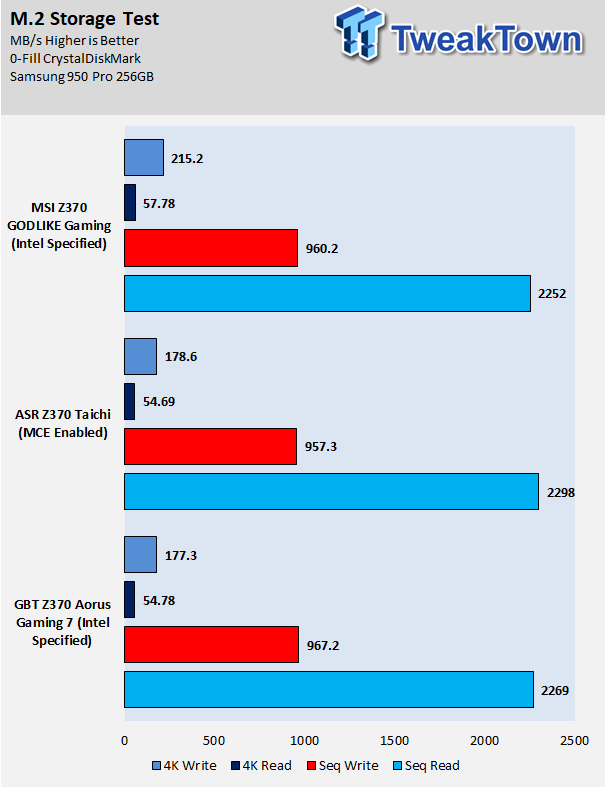
ixChariot Network Throughput:

The Z370 Taichi has some of the best storage scores so far. Networking performance for the wired Intel NICs is solid, and the 1x1 wireless AC adapter is doing what it should, as it's not rated 866Mbps like the other wireless card in the charts.
Audio RMAA 5.5:
I disable all audio features, set the correct bitrates, and then test the audio with a loopback test.
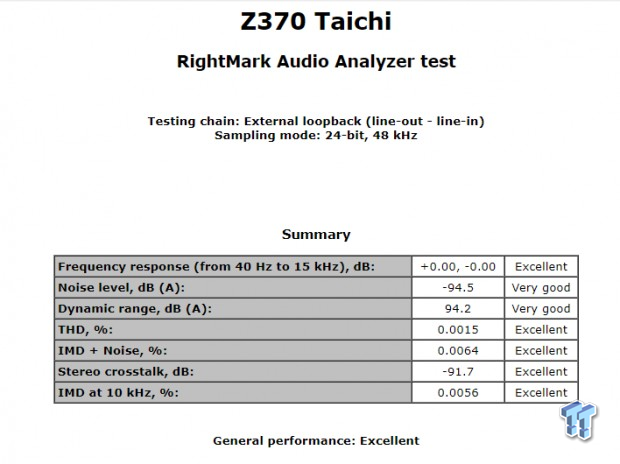
Sound Judgment by Ear: Excellent. There are five ratings for audio: 1. Problems, 2. Okay, 3. Acceptable, 4. Very good, 5. Excellent
Thermal Imaging and Power Consumption
System power is measured at the wall with an AC power meter.

Note on Thermal Images: In the temperature section, we use our Seek thermal imaging camera to capture the surface temperatures of major components on the board. I look at the VRM and then all other things that light up the screen. If there is something to worry about, then I will state it. Otherwise, I will just show the hotter running parts of the board for fun. Unless some component is over 80-90C, then there isn't anything to worry about.
All systems will act differently, so I will look for commonalities, such as how far from the VRM the heat spreads through the PCB and the difference in temperature between the front side and backside of the PCB. Keep in mind, the majority of the heat from the VRM goes into the PCB as it is a giant soldered on copper heat sink. A larger difference in temperature between the back and front of the PCB points towards a more effective heat sink.
Thermal Testing at Stock Speeds:
The image on the left is always at idle, and the image on the right is at load. During ALL TESTS, fans to the right of the motherboard from the (Corsair H110i) radiator are left on automatic mode (ramps with internal block temperature). Additionally, a 120mm fan is situated right above the VRM, and it blows down at a medium rate (very quiet). Thermal Images are taken at loop 15 of Intel Burn Test

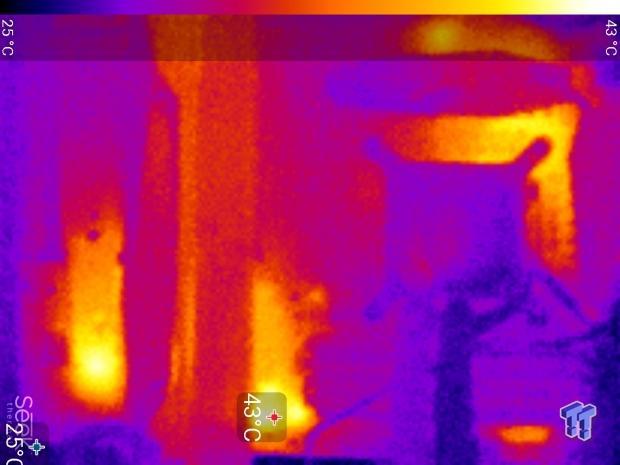
Full frontal.

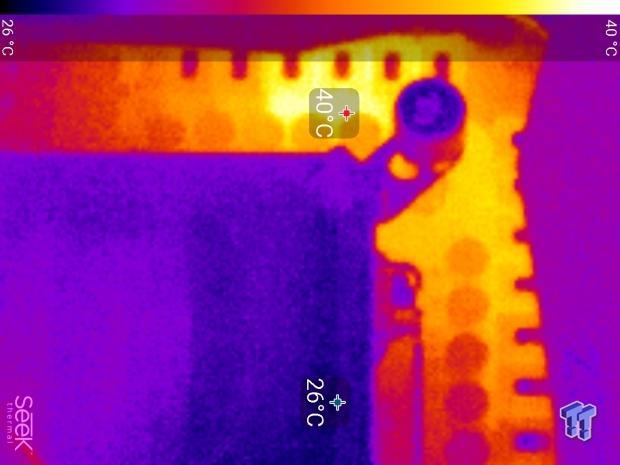
Up-close of the front of the VRM.
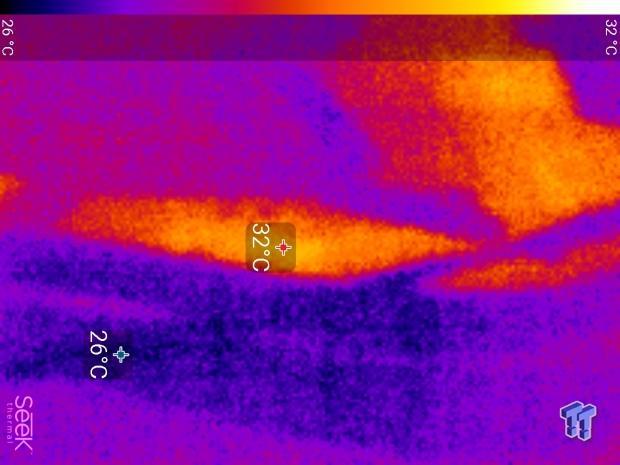
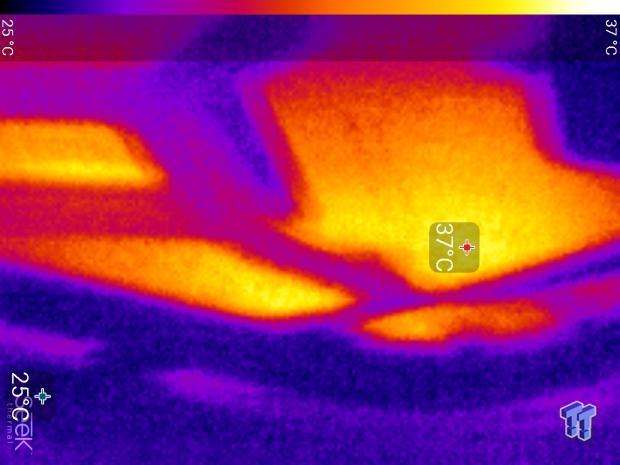
Up-close of the back of the VRM.
Thermal Testing at 4.9GHz/1.3v Overclocked Speeds:
The image on the left is always at idle, and the image on the right is at load. During ALL TESTS, fans to the right of the motherboard from the (Corsair H110i) radiator are left on automatic mode (ramps with internal block temperature). Additionally, a 120mm fan is situated right above the VRM, and it blows down at a medium rate (very quiet). We standardize this test with a 4.9GHz on all cores with 1.3V real under load and take pictures at the 80% mark of HandBrake rendering a 4K video.
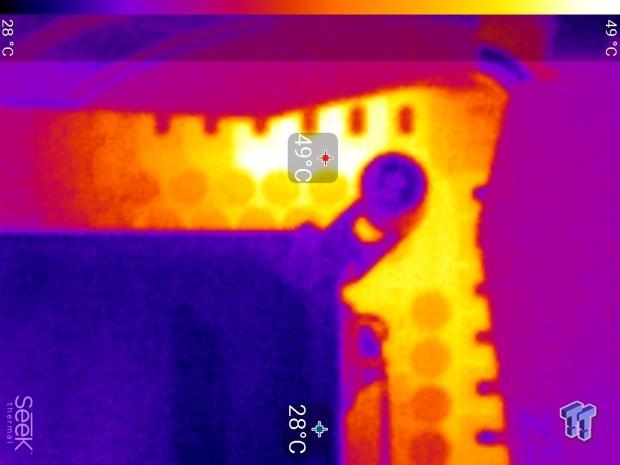

Up-close of the front and back of the VRM.
The Z370 Taichi produced excellent VRM temperature results, and that isn't very surprising as the 60A inductors, dual N-channel FETs, and new Intersil PWM work together in harmony. Temperatures on the front were always higher than on the rear of the motherboard, which means that the motherboard is being cooled well. Quality in the VRM section of the motherboard is superb.
Anything under 60C is great, 60-80C is acceptable, and anything above 80C is a bit worrisome (if at stock).
What's Hot, What's Not & Final Thoughts
Here are key points about the ASRock Z370 Taichi.
What's Hot
VRM Quality : ASRock deployed Intersil's brand new digital PWM along with 25A dual N-channel MOSFETs and 60A high current inductors. They also used 12K FP solid polymer capacitors. Overall, this VRM is solid and overkill for supported CPUs, and the thermal results reinforce the quality we see.
Triple Intel NICs: Two wired Intel NICs and a single Intel Wireless AC card provide exceptional network connectivity. While the Wireless AC card is 1x1 433Mbps, it's still good enough to connect to the internet.
Extra Internal SATA and USB: Many Z370 motherboards feature one internal USB 3.0 header, two USB 2.0 internal headers, and six SATA6Gb/s ports. ASRock went above and beyond and expanded USB 3.0 headers to two, added a third USB 2.0 header, and added two more SATA ports.
Simplistic: The motherboard's simple black and white aesthetics are what many people want these days. The "gear" theme is well planned and executed, and the motherboard's shields and heat sinks match the PCB silkscreen with ease. RGB LEDs are also at a minimum.
What's Not
USB ports on Rear IO: There are only five USB type-A ports on the rear IO, but the good news is that if you need more, you get two internal USB 3.0 headers and three internal USB 2.0 headers.
Final Thoughts
ASRock's Z370 Taichi is a welcome addition to the Taichi legacy, offering a solid set of features with great quality components at a very reasonable price. Its aesthetics are in line with what we have come to expect with the Taichi series, all the way down to the few RGB LEDs built into the motherboard.
The dual Intel NICs, wireless AC, and high amount of internal SATA, USB 2.0, and USB 3.0 offer an easy way to expand port count and storage. We did encounter some minor issues, such as multicore enhancement being enabled by default. The good news is that ASRock is on top of things, for instance, they fixed LLC levels through the latest BIOS a few days after we made an inquiry.
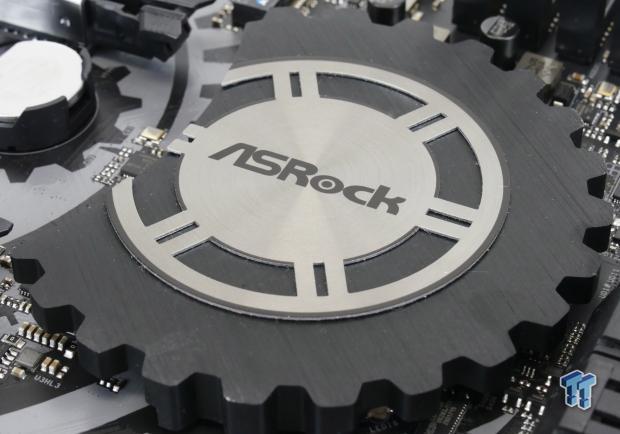
The motherboard also offers the basics when it comes to overclocking, including a POST code display, clear CMOS button, and dual BIOS ROMs with a jumper to select the backup. If you are looking for a flashy motherboard that lights up your system with built in RGBs, then the Taichi probably is not for you. It is more about the basics when it comes to visual appeal. Overall, I was impressed with the Z370 Taichi, and I foresee it being an extremely popular motherboard as it strikes the right balance of features versus price.

